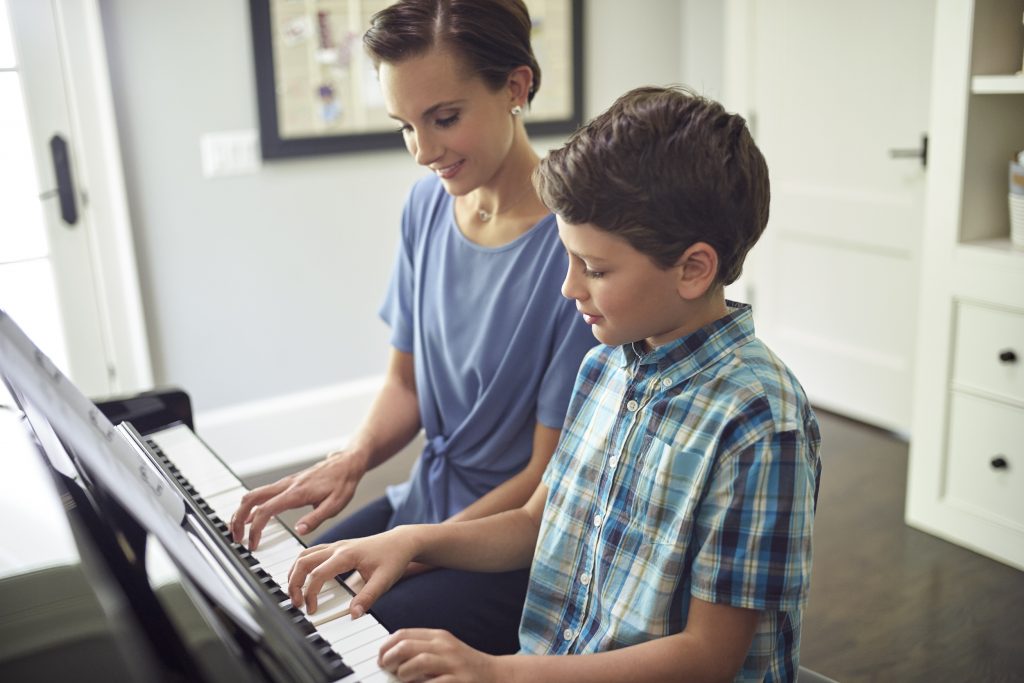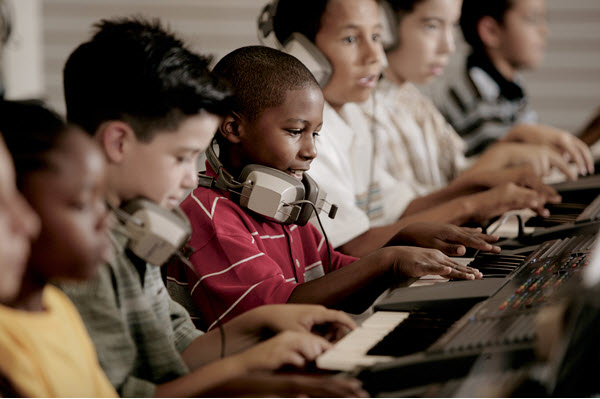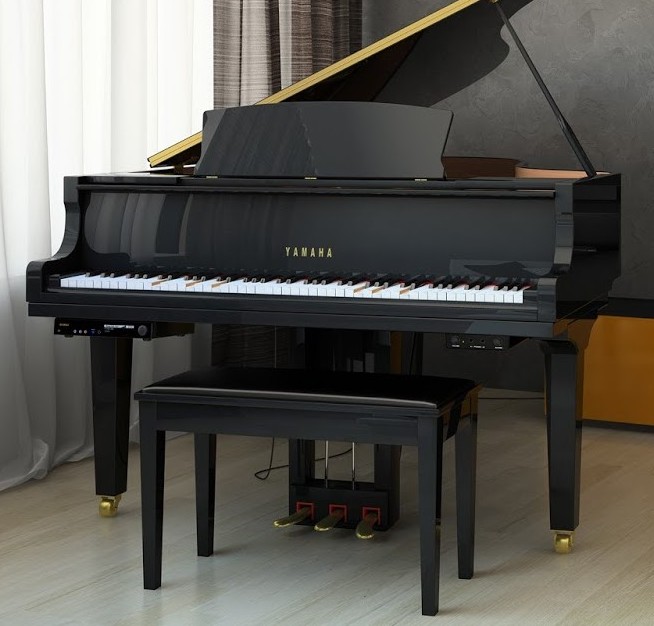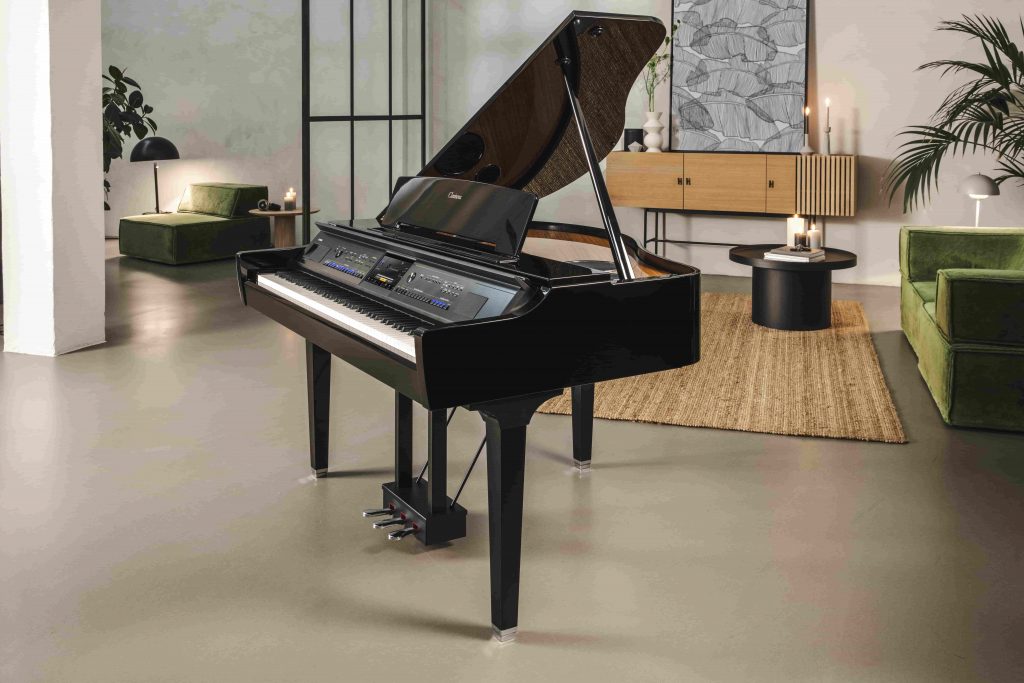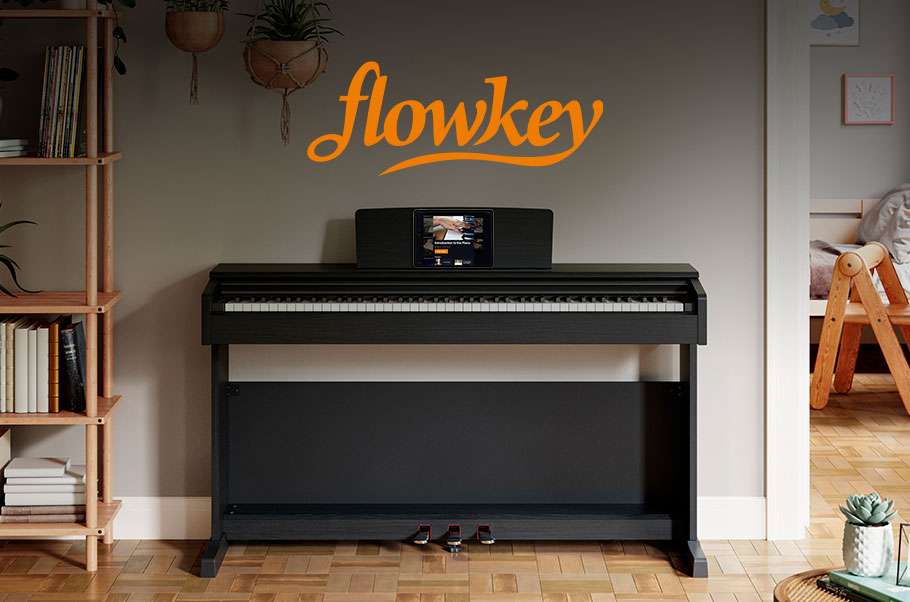Tagged Under:
What’s the Difference Between a Digital Keyboard and a Digital Piano?
They may seem the same at first glance … but they’re not.
If you (or your child) is new to the world of digital keyboards, there are a wide array of options available to you — so wide, in fact, that it can sometimes appear overwhelming.
Digital keyboards, portable keyboards, arranger workstations, digital pianos … what’s the difference between them? In this article, we’ll describe both the differences and the commonalities.
Acoustic vs. Digital Keyboards
First, though, it’s important to understand the difference between an acoustic instrument (like a grand piano, for example) and a digital one, which lies solely in the way they make sound. The sound of an acoustic piano is actually the sound of physical strings vibrating in the air, which occurs when they are struck by hammers, as a result of keys being pressed. Although piano is by far the most common acoustic keyboard instrument, there are others as well, including harpsichord (which also has strings) and celeste (which instead has bells).
In contrast, digital instruments (including both digital keyboards and digital pianos) make their sound electronically. In other words, they require an amplifier and loudspeaker (or connected headphones) in order to be heard; without an amp and speakers (which are often built in), you wouldn’t hear anything, which is why digital keyboards make no sound when they are turned off.

What’s more, the sound made by these instruments begins life as a series of numbers (i.e., digits — hence the name “digital”), same as data in a computer. This works in a very similar fashion to the way your laptop, smartphone or tablet stores and plays back your favorite tunes, except that in the case of a digital keyboard or piano, the numbers are describing a single sound (played back at a pitch corresponding to the note being pressed on the keyboard), as opposed to a complete song. This is why most digital instruments (including virtually all digital keyboards and digital pianos) can be easily connected to laptops, smartphones and tablets, allowing you to record your performances and play along to your favorite songs, even while practicing over headphones.
Digital Keyboards vs. Digital Pianos
Digital pianos, as their name implies, are designed specifically to have the sound and feel of acoustic pianos — and sometimes to look like them as well. Digital keyboards, on the other hand, typically offer a wider range of sounds, but rarely have the feel or look of an acoustic piano.
Here are their main differences:
Number of Keys
Digital pianos will almost always have 88 keys, the same as an acoustic piano. Some digital keyboards also come equipped with 88 keys, but more commonly have 61 or 76 keys. Their keys are sometimes smaller, too.

Feel
The keys of a digital piano will almost always be weighted, giving them a feel very close to that of an acoustic piano. (Yamaha digital pianos such as Clavinova, Arius and Portable P-Series and DGX-Series models have graded weightings, where the “action” is heavier in bass notes and lighter in treble notes, like an acoustic piano.) Their keys may sometimes be made of wood or synthetic ivory and ebony, giving them a tactile feel similar to that of pianos.
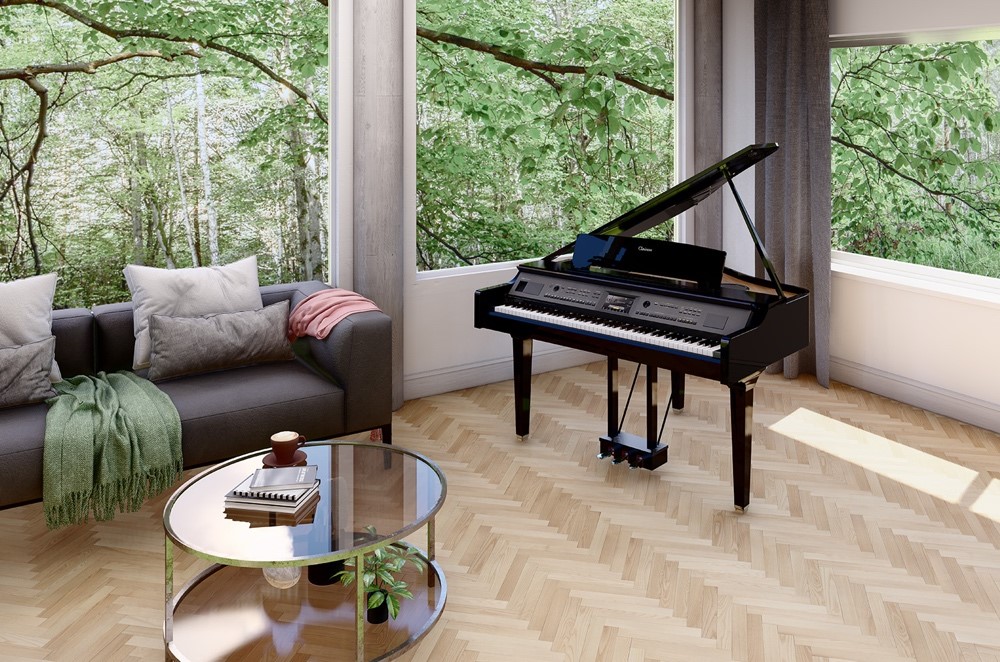
In contrast, the keys of most digital keyboards are unweighted and are almost always made of plastic. Many digital keyboards, however, offer touch-sensitive (sometimes called velocity-sensitive) keys. Though this is not the same as weighted keys (there is no “resistance” when you depress them), this feature does cause sounds to get louder and/or brighter as keys are struck with greater force, similar to what happens on an acoustic piano.
Quality and Quantity of Sounds
As you might expect, digital pianos tend to have better quality piano sounds than most digital keyboards. The recordings (“samples”) of the acoustic pianos stored in their memory are often multi-layer — that is, taken over many different key ranges and at multiple degrees of intensity — giving them a great degree of realism. Digital pianos may also offer a number of advanced features that help to further the acoustic piano experience. For example, selected Yamaha Clavinova models employ Virtual Resonance Modeling (VRM), which simulates the distinctive reverberation generated by the body of a concert grand piano as it resonates when notes are played.
However, the tradeoff for these kinds of precision piano sounds is that there is often less memory space for other types of sounds. For that reason, you’ll generally find more, and a larger variety of sounds in a digital keyboard than in a digital piano, though in some cases the piano sounds won’t be quite as high quality. With so many different sounds at your fingertips (including drums and percussion), it’s easy to construct “one-man-band” arrangements in most digital keyboards. This is especially true of instruments called arranger workstations (or digital workstations), which typically provide many hundreds of sounds as well as sophisticated onboard accompaniment and recording tools. Yamaha Genos digital workstations, for example, offer 1,710 voices, 550 accompaniment styles and 216 arpeggio types, along with dozens of sophisticated effects like reverb and chorus — you can even apply various vocal harmony effects to your voice as you sing.
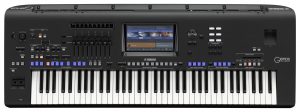
Size, portability and price
For the most part, digital pianos tend to be considerably larger and heavier than digital keyboards, which are designed with portability in mind. Many digital pianos are actually built into wooden piano-like cases (for example, Yamaha Clavinova and Arius models), and, as you might expect, these are primarily intended to be used in one place. There are, however, portable digital pianos like the Yamaha P-Series or DGX Series, which combine authentic piano sound and feel with the ability to be easily transported.
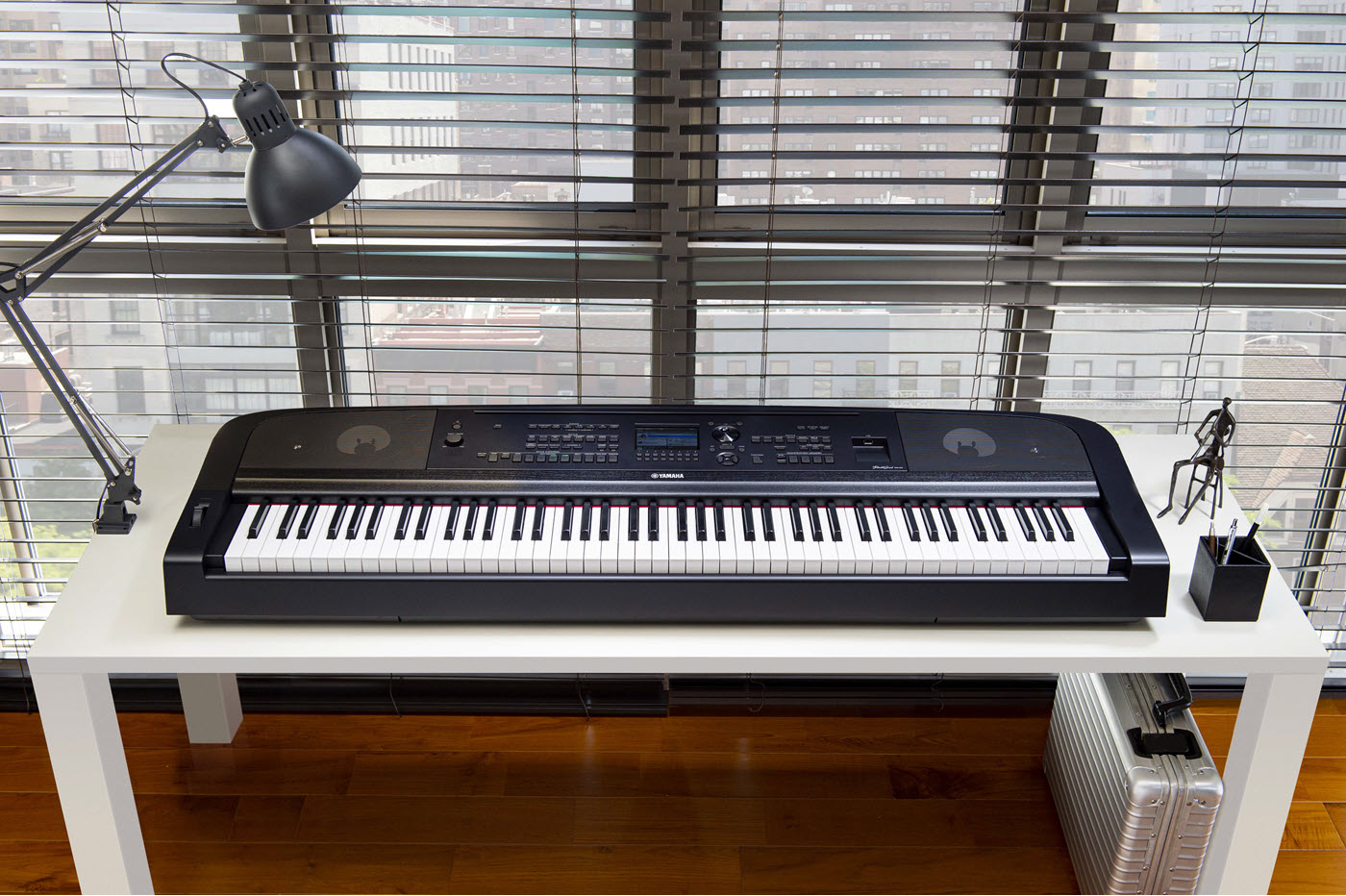
On the whole, though, if you intend to make music on the go or will need to bring your instrument to rehearsals and performances, you’ll generally be best served with a digital keyboard. Some, like Yamaha PSR Series instruments, literally weigh just a few pounds and take up very little space; some models are battery-operated and small enough to tuck under your arms and be played anywhere!

Both digital pianos and digital keyboards offer benefits not available from an acoustic piano. For one thing, even the most expensive digital piano is likely to be less costly than most acoustic pianos; for another, digital instruments are much easier to maintain, and you never have to tune them. However, the advanced features, size and weight of most digital pianos tends to make them costlier than digital keyboards, which are generally quite affordable. But there are many exceptions to this rule, and you’ll find both kinds of instruments at a wide variety of price points.
So, which should you buy — a digital keyboard or a digital piano? The decision is largely determined by how important a true piano sound and feel is to you. But there’s one inescapable fact: Whichever you choose, a lifetime of musical pleasure awaits!
Check out these related blog articles:
Buying Your First Digital Keyboard
Which Digital Piano Is Right for Me?
Choosing the Right Keyboard on a Budget
Choosing the Right Keyboard When You Have Space Limitations
Step Up to a Better Keyboard, Part 1: Feel and Sound
Step Up to a Better Keyboard, Part 2: Advanced Features
Click here for more information about Yamaha digital keyboards.
Click here for more information about Yamaha digital pianos.
Click here for more information about Yamaha digital and arranger workstations.











